If you’re looking to get your drilling jobs done faster, then you need to make sure that your drill bits are sharp. Dull bits can quickly lead to frustration and decreased productivity. In this comprehensive guide, we will teach you how to sharpen drill bits with a file. We’ll answer some common questions and provide useful tips that will help you get the job done right. So whether you’re a professional contractor or just someone who likes to do DIY projects around the house, read on for the best advice on how to sharpen drill bits!
A Few Things to Know About Drill Bits
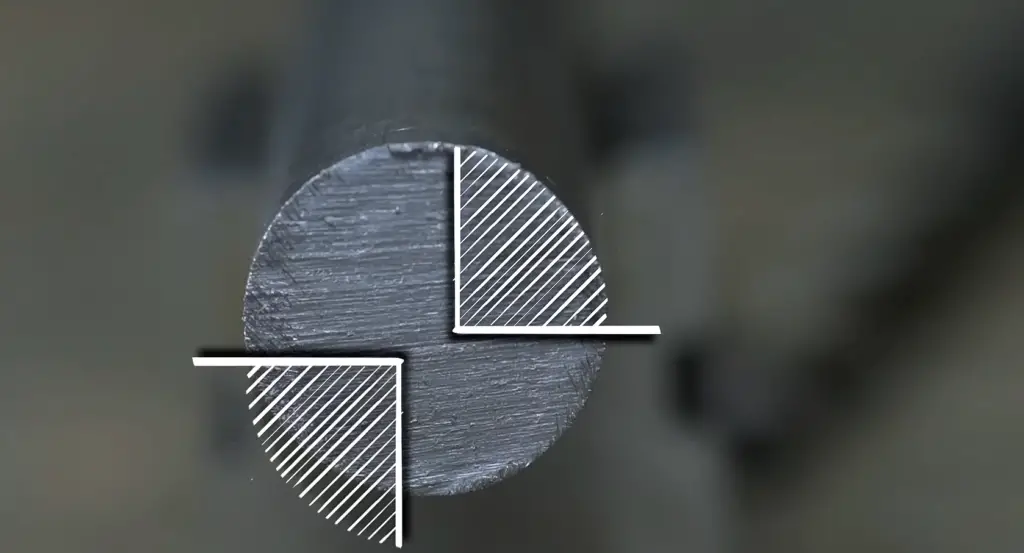
Understanding how to use and maintain this vital piece of equipment can help you get the job done right. Here are a few things to know about drill bits:
- Types of Drill Bits: There are many different types of drill bits available, depending on your task and material. Common choices include twist drills, masonry bits, wood boring bits, spade bits, brad point bits, multi-material bits, countersink/countersink sets, hole saws and auger bits. Each type has its own unique characteristics and should be chosen based on the job at hand.
- Materials: Drill bits can be made from a variety of materials including high-speed steel (HSS), cobalt steel, carbide, titanium nitride and diamond. Each material is suited for different tasks and conditions so it’s important to choose the right bit for the job.
- Heat Treatment: Heat treatment helps drill bits last longer by improving their hardness and resistance to wear. It also increases the cutting edge strength which can result in better hole-making results. Make sure you read up on heat treating instructions before attempting this process yourself.
- Sharpening: Even with proper maintenance and heat treatment, drill bits will eventually become dull over time and will need to be sharpened or replaced completely. If you sharpen the bit yourself, make sure to follow appropriate safety procedures and use a sharpening jig to ensure that you are doing it correctly.
- Storage: Storing your drill bits properly can help them last longer and work better. Keep them in a dry place away from moisture and extreme temperatures to avoid rust or other damage. Also, keep them organized in a toolbox so they are easy to find when needed. [1], [2]
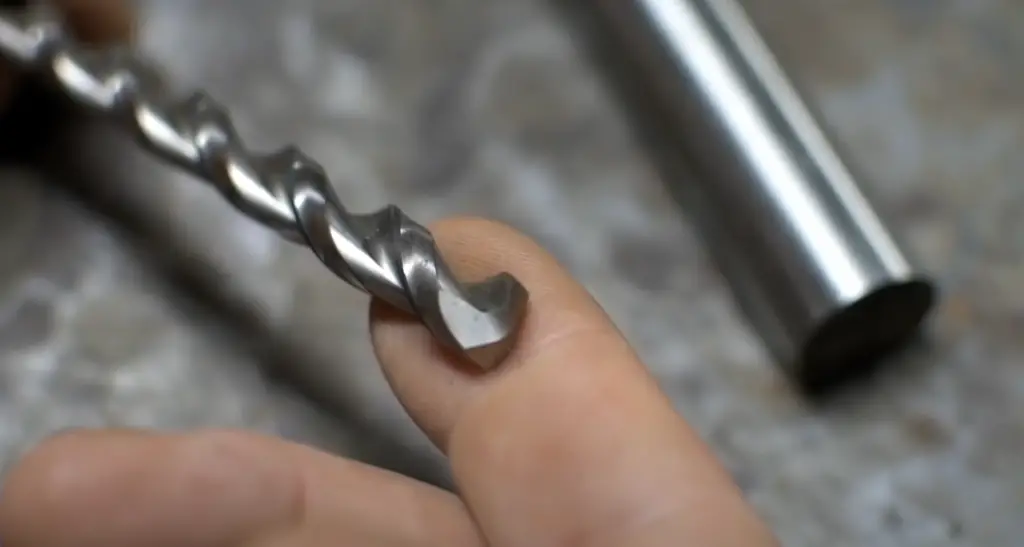
Why It’s Important to Sharpen drill bits
Sharpening drill bits is an important task that should not be overlooked. If a drill bit is not properly sharpened, it can cause a number of issues when used:
- Dull Drill Bits Slip Easily – When you use a dull drill bit, it slips much more easily than one that has been freshly sharpened. This makes it difficult to achieve the desired depth and angle when drilling into material as the bit will just skid off rather than stay in place and create an even hole. It can also lead to uneven surfaces due to the slipping.
- Uneven Wear on Materials – A dull drill bit will transfer much of the stress from each drilling motion onto the material itself. This can cause the material to wear unevenly, which can create issues with a uniform surface finish or even cause the bit to become stuck in the hole due to excess friction.
- Overheating of Drill Bits – A dull drill bit does not cut as efficiently as a sharp one and thus will generate more heat when drilling. This increased temperature can lead to a decrease in cutting performance and eventually damage the drill bit itself if it gets too hot.
In addition to these potential issues, sharpening drill bits is also an important part of making sure they last longer overall. Sharpening your drill bits regularly means that you don’t need to replace them as often, saving you both time and money in the long run.
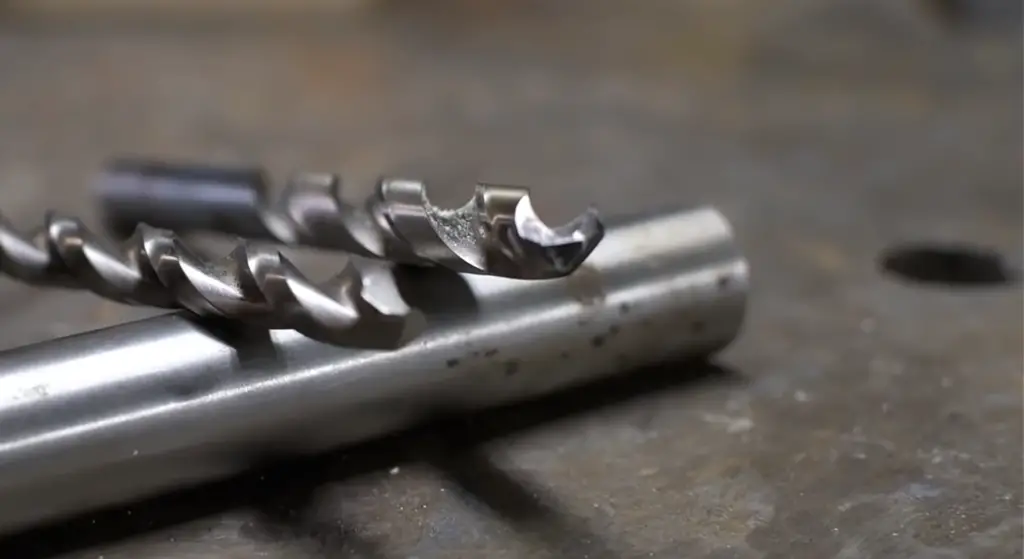
Sharpening drill bits is a relatively simple task that provides many benefits. Taking the time to properly sharpen your drill bits before each use will ensure that you get the best performance out of them, as well as extend their life expectancy and save you money in the future. [1], [2]
7 Easy Steps on How to Sharpen Drill Bits with a File
Now that you are more aware of drill bits and their qualities, we will discuss the 7 easy steps on how to sharpen a drill bit with a file. In this section, we will also discuss some of the necessary safety precautions that should be taken.
Gather materials
Before you begin sharpening your drill bit, make sure that you have all the necessary materials on hand. You will need a file, a vise or clamp, and the appropriate safety equipment such as gloves and eye protection. Additionally, it is also helpful to have some lint-free cloths or rags nearby to help keep everything clean while you work.
A table wise or metal clamp is necessary to keep the drill bit in place so it can be worked on safely and accurately. Make sure that the surface of the vice or clamp is clean and secure to prevent any slipping while you sharpen your bit.
Clean the drill bit
To start, use a brush and solvent (such as mineral spirits) to remove any dirt and debris from the bit. Scrub the entire bit thoroughly, paying particular attention to any grooves or crevices that may be present. Make sure all residue is removed before moving on.
We suggest you avoid using anything abrasive to clean the drill bit, as this can cause unwanted damage. Instead, focus on removing grime and build-up with gentle scrubbing.
Once you are done cleaning, dry off the drill bit quickly using a soft cloth. This will help prevent it from rusting.
Put your safety gear on
Before you start sharpening your drill bit, make sure to wear the appropriate safety gear. Safety glasses should be worn while filing the drill bit and any time that you are working with tools as tiny filings can create eye damage if they enter the eye. Additionally, wearing gloves will protect your hands from potential cuts or splinters caused by the filing process.
When filing a drill bit, it is also important to ensure that you are in an environment which is properly ventilated. This will help to reduce the risk of inhaling dangerous dust particles created during the process. Furthermore, make sure that there is adequate lighting available so that you can clearly see what you are doing and check for signs of wear or other issues on the drill bit.
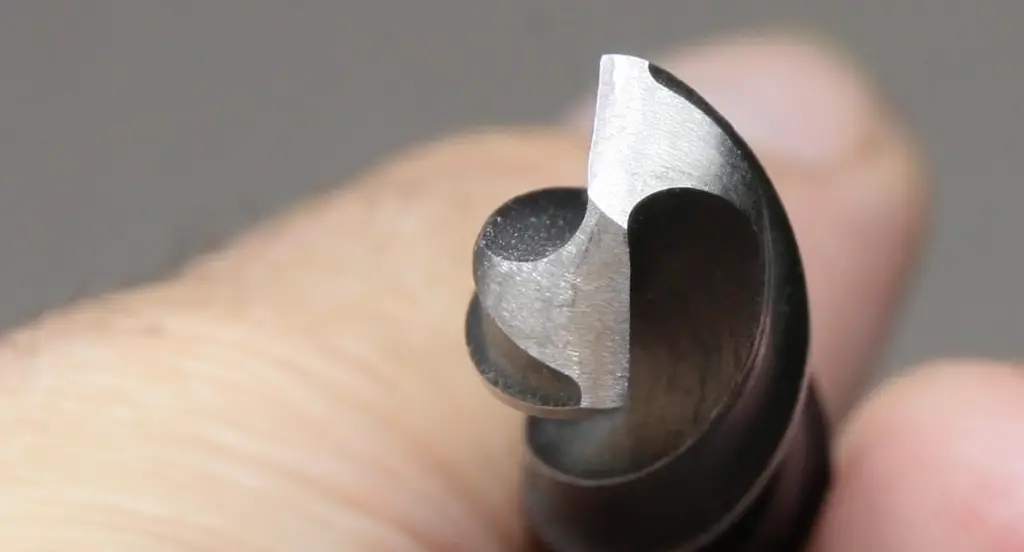
Finally, when filing a drill bit, it is important to make sure that you are in an area where you can focus on the task at hand and work without interruption or distraction. This helps to ensure that your filing process is as efficient and effective as possible.
Secure a drill bit
It’s important to secure drill bits when sharpening a drill bit with a file because it prevents the bit from slipping or moving out of alignment. This means that you can achieve an even and consistent edge all around the circumference of the drill bit, ensuring that it will perform optimally during cutting tasks. Securely holding the drill bit in place also helps prevent potential injuries caused by slips or misaimed strokes with the file.
There are several ways to securely hold your drill bit and ensure accurate sharpening. The most popular method is using vice grips, which provide a reliable grip on the shank of the drill bit that allows precise control over filing angle and depth. You can also use clamps if you don’t have access to a vice, as these will also securely hold the drill bit in place. Finally, if you find yourself without any clamps or vices, you can use your hand or some form of padding material like tape or cloth to firmly grip the shank and provide an effective degree of stability for sharpening. The key is to ensure that whatever method you choose, the drill bit is both secure and aligned properly before beginning to sharpen it with a file.
Choose an appropriate file
When it comes to sharpening drill bits, the type of file you use is critical. Filing with the wrong type of file can damage your drill bit, preventing it from performing properly or even becoming irrecoverably damaged.
The most commonly used files for sharpening drill bits are round and triangular-type files. While round files are suitable for general purpose filing, they don’t provide you with as much control and precision when filing a sharp point on a drill bit as a triangular-type file does. Triangular-type files have sharper edges which make them better suited for creating fine points on the cutting edges of drills.
There are many types of files and therefore it’s important to do your research to find the one that best suits your purpose and the type of drill bit you are sharpening. Some common types of files include: hand-flat, half-round, round, flat bastard, rat tail and fan shaped. Each file has its own unique shape and design which will affect how it works when filing a drill bit.
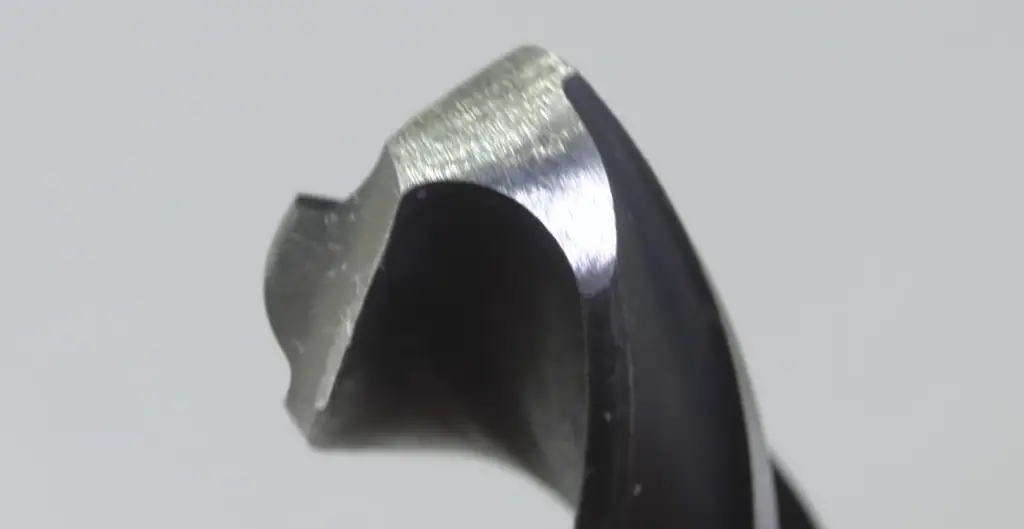
Sharpen the drill bit
Now that you’ve chosen the right type of file and secured your drill bit, it’s time to start sharpening. To begin, place the file against the cutting edge of the drill bit so that it is perpendicular to its length. When filing a drill bit, make sure to maintain consistent pressure throughout the entire stroke and keep the movements slow and steady. This will help ensure that a fine point is created without overfilling or gouging into the metal.
To sharpen both sides of your drill bit, move the file in an arc-like motion along one edge as you did before then flip it around and repeat on the other side. As you progress further down either side of the drill bit, check for signs of burrs or rough edges which indicate that the cutting edge is sharp enough. If any of these signs are found, stop filing and move on to the next step.
Test the drill bit
Once you’ve finished sharpening your drill bit, it’s important to test it before beginning any cutting tasks. This will help ensure that the bit has been properly sharpened and is ready for use. To do this, place the drill bit against a hard surface such as wood or metal and gently press down with firm pressure until the bit begins to penetrate into the material. If the bit penetrates easily, then it has been successfully sharpened and is now ready for use.
If not, try sharpening again by repeating steps one through three until it does penetrate. It may take multiple attempts to get a satisfactory result but if done correctly, you should be able to achieve a finely honed edge that produces clean cuts with minimal effort. [1], [2]
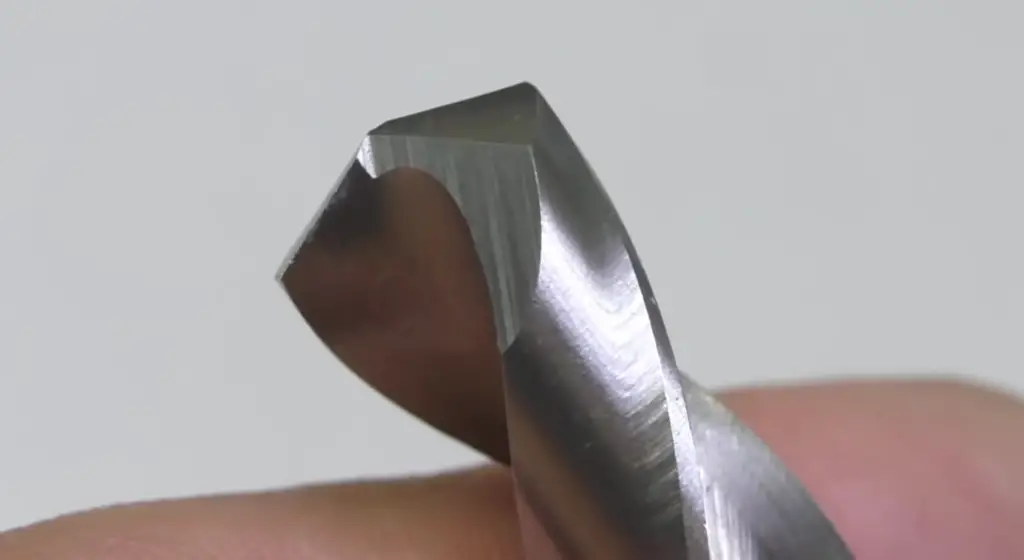
FAQ
What is the best way to sharpen a drill bit?
The best way to sharpen a drill bit is by using a file. A file is more accurate and easier to control than most other sharpening methods, such as power grinding or honing. When using a file, it’s important to take your time and use the right technique. Start by holding the drill bit in one hand and the file in the other. Angle the file at around 30 degrees against each side of the cutting edge while applying light pressure. Slowly run the length of the cutting edge until you have sharpened both sides evenly. To finish up, break off any burrs with a deburring tool or piece of emery cloth. This will ensure that your drill bit has been properly sharpened for maximum performance and efficiency.
How often should I sharpen my drill bit?
It’s important to regularly check and sharpen your drill bits when needed. This will depend on how often you use them, what materials you are drilling through, and the type of drill bit. As a general rule, it is recommended to sharpen your drill bits at least once a month or after every 20-30 holes drilled in hard materials such as steel. This will ensure that they are always working at their best performance level and that you get the most out of them.
How do you sharpen a drill bit manually?
Sharpening drill bits with a file is a straightforward process. The first step is to secure the bit in a vise or clamp so it won’t move around while you are filing. Next, use an appropriate size flat file and run it along the cutting edge of the bit in one direction. Start at the tip of the drill bit and work your way down the length of it, using light pressure on each stroke. Make sure to keep your file perpendicular to the bit as you work. When you reach the bottom of the bit, turn it over in its holder and repeat this same process on this side. Continue until both sides have been sharpened evenly with no burrs on either side. Finally, chamfer or break any burrs on the very tip of the drill bit.
What file do I need to sharpen a spade bit?
A metal file with a single cut is the best option for sharpening spade bits. This type of file has one set of teeth and can help ensure that the bit maintains its shape during the sharpening process. When selecting a file, you should choose one with an appropriate size for your spade bit – too fine a file won’t remove enough material from the spade bit, while too coarse a file may damage it.
Can you sharpen drill bits with sandpaper?
Yes, it is possible to sharpen drill bits with sandpaper. To begin, you will want to use a flat piece of rubbing compound or fine-grit sandpaper. Start by laying the paper on a flat surface and place the drill bit onto the paper. Move the bit in slow circles over the sandpaper for about 10 seconds per side and remove any burrs that form around the edges of the bit. Once both sides have been sharpened, check them against each other to make sure they are even before continuing on to your next project.
When using sandpaper to sharpen drill bits, keep in mind that it should only be used as a last resort.
Additionally, sandpaper is prone to clogging and can potentially damage the surface of your drill bits if used incorrectly.
How do you tell if a drill bit is sharp?
One way to tell if a drill bit is sharp is by running your finger over the cutting edge. If you can feel a burr, or rough spots, then the drill bit is dull and needs to be sharpened. You can also visually inspect the tip of the drill bit for any chips or deformations that may have occurred due to wear and tear. In addition, when drilling with a dull bit it will take more effort and time to complete holes in materials like wood, metal or plastic.
Useful Video: How to Sharpen a Drill in Seconds!
Conclusion
Sharpening drill bits with a file can be done quickly and easily with the right tools and techniques. With proper use, you should see improved results when drilling into any material. It is important to remember to always use caution when sharpening drill bits with a file.
In this article we have provided a detailed guide on how to sharpen drill bits with a file. We covered the necessary tools, discussed different techniques and also outlined some safety tips.
Be sure to wear protective gloves, eye protection and a dust mask for safety reasons. Additionally, periodically inspect your drill bits for signs of wear and tear as this can indicate that it may need resharpening or replacing all together. Lastly, make sure you understand how much pressure you should place on your files while sharpening the drill bit in order to get optimal results without damaging the tool itself. Following these steps will ensure that your drill bit stays sharp and functions properly throughout its lifetime. Thanks for reading!
References
- https://toolsweek.com/how-to-sharpen-drill-bits-with-a-file/
- https://homesteady.com/13415993/how-to-sharpen-scissors-with-a-dremel






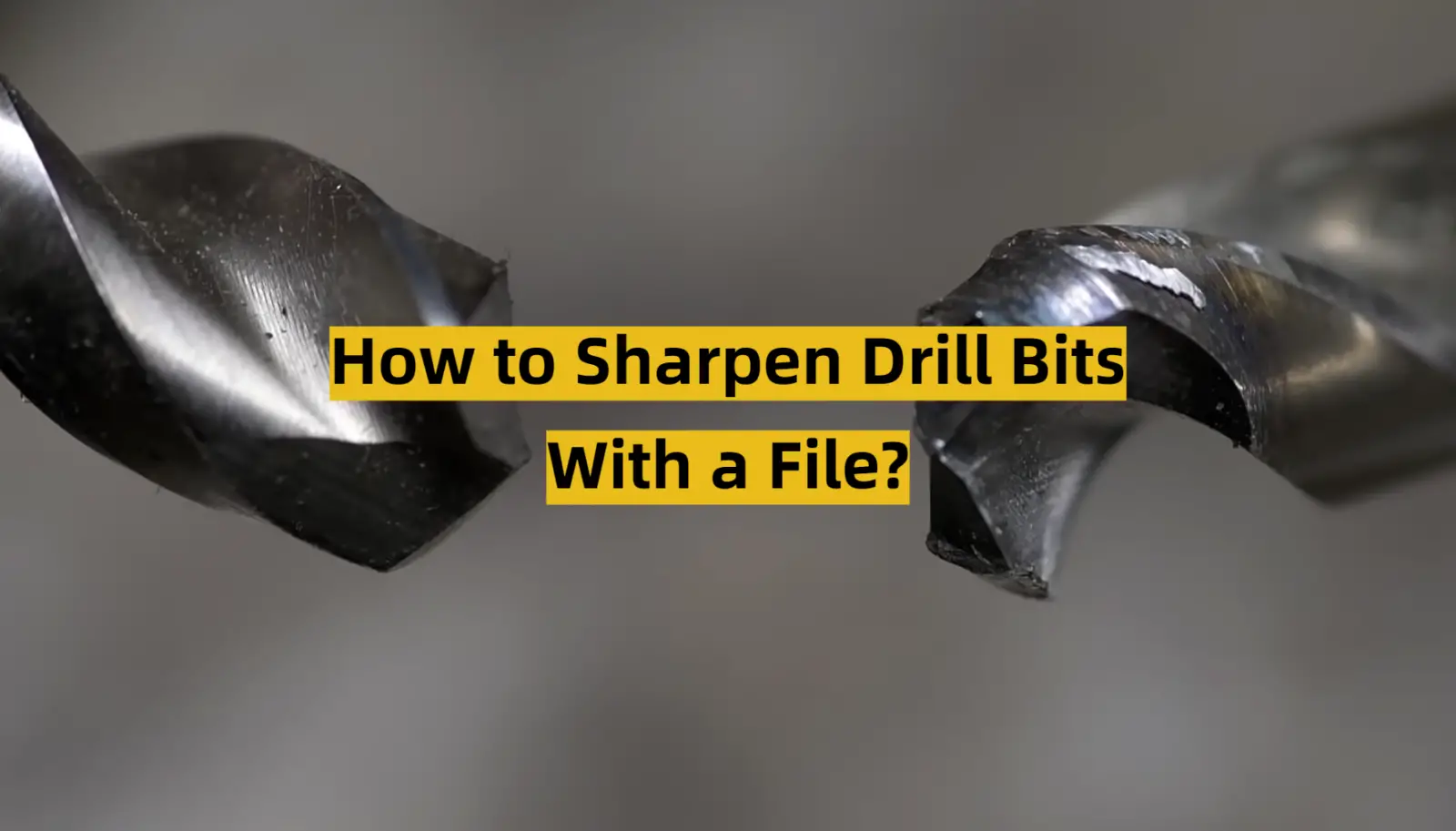






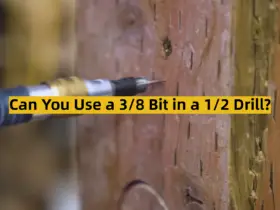
Leave a Reply